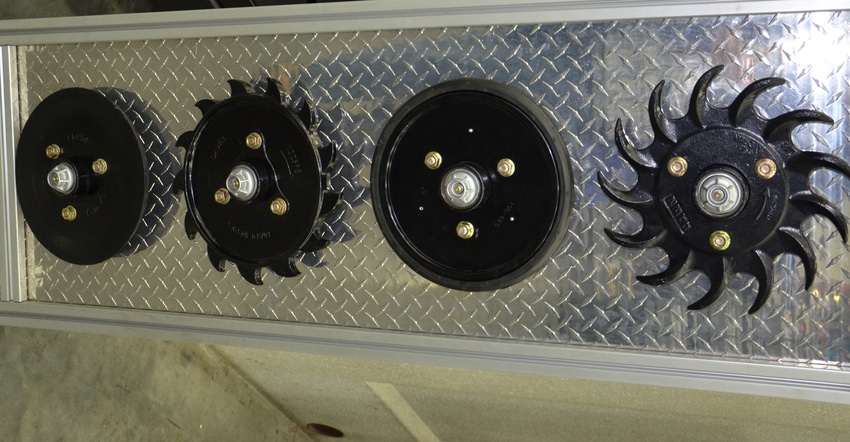
Here’s a twist on the TV commercial for Capital One credit cards. At the end of the commercial, a spokesperson asks a question. Sometimes it’s Samuel L. Jackson; other times it’s Jennifer Garner. In one commercial, it’s even Jennifer Garner’s dad. The question is always the same: What’s in your wallet? OK, how about this: What closing wheels are on your planter?
Odds are if a dozen of you answered, there'd be a dozen different answers. Some people may even have a different kind on each side of the row. And a few of you may say, "It depends." You may switch types depending upon soil and moisture conditions.
Closing wheel type matters
One of the features at Becknology Days the past couple years was a planter decked out with different types and combinations of closing wheels on each row. Beck’s staff planted plots in their Practical Farm Research trials to compare closing wheels like those featured on the field day planter.
Ryan McAllister, who headed up Beck’s PFR program in 2016, points to a two-year summary of the closing wheel study at Atlanta, Ind. He concludes there was an obvious advantage in corn for more aggressive styles of closing wheels compared to conventional rubber closing wheels. Based on the average of the two-year data, every other type of closing wheel produced stands that outyielded stands planted with rubber closing wheels by roughly 10 or more bushels per acre.
Here’s one important caveat, however. The no-till trial was intentionally planted in less-than-ideal conditions. Typically, it’s planted a day or so before it's dry enough for ideal planting. In 2016, there were small pockets in the field where all closing wheels on the planter had issues closing the seed furrow, officials note.
The point of the study was to see what type of closing wheels worked best specifically in no-till when conditions were less than ideal, they explain.
Not black and white
Some within the industry who sell closing wheels report that sales of their particular closing wheel have gone up if it performed well in the Beck’s study. However, here’s the rub: According to 2016 results vs. the two-year average, different types of wheels don’t perform the same every year.
Although the goal for this study is to plant shortly before conditions are right, when to plant is still a judgment call — just like it is for anyone else. A slight shift in field conditions can apparently affect how closing wheels perform.
For example, cast-iron closing wheels were near the top of the heap in both years, but only slightly better than rubber wheels in 2016. One commercial variation of closing wheels performed well in 2015, but yields for that wheel were virtually the same as yields for rubber closing wheels in 2016.
The conclusion? What should be on your planter may boil down to what works best on your farm year by year, and maybe even field by field.
About the Author(s)
You May Also Like




